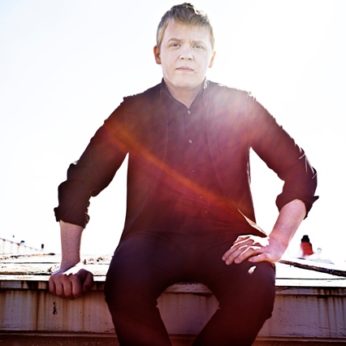Composer: György Ligeti (b. 1923 - d. 2006)
Performance date: 01/07/2013
Venue: Bantry Library
Composition Year: 1982
Duration: 00:23:09
Recording Engineer: Damian Chennells, RTÉ lyric fm
Instrumentation: vn, va, vc, pf
Instrumentation Category:Trio
Instrumentation Other: vn, hn, pf
Artists:
Pekka Kuusisto -
[violin]
Hervé Joulain -
[horn]
Joonas Ahonen -
[piano]

The Horn Trio was Ligeti’s first major work
in the 1980’s and it ended a five year compositional drought that lasted from
1977-1982. He himself describes this crisis as a general one affecting many
composers of different generations, who were questioning the primacy of the
which he found his feet again. The work had been commissioned as a companion
piece to the Brahms Trio and he saw it as an Hommage à Brahms so it necessitated a redefining of his
relationship to musical tradition. Ligeti had of course been in the forefront
of the avant-garde ever since his dramatic flight from
though, unlike figures such as Xenakis, Stockhausen, Cage and Boulez, he did
not have an adversarial approach to the classical tradition. But neither was he
a fan of the retro movement when it came to composition, it was important to
emphasize that one was living in 1982 not 1882.
He begins the work with a false quotation
from Beethoven’s Les Adieux using it
as a germinal motive and an emblematic warping of tradition. Beneath the
idyllic nostalgic surface there are other radical factors at work despite a
sonata form structure. He describes the heterogeneous tuning system of the
Trio:
The piano plays as it is tuned, by definition,
tempered. The violin tuned in pure fifths deviates from the tempered tuning
considerably – as always with chamber music for strings and piano. In a tonal
violin/piano sonata of the Classical or Romantic period the violinist tries to
match the tuning of the piano to some degrees, at least in the slow movements.
Though this always remains an approximation, it is part of the character of the
genre. In my Trio I have taken the technical possibilities of the valve horn to
its very limits, and not just in terms of virtuosity. Thus I did not really
write for a valve horn in F and B-flat, but rather for a collection of natural
horns. The sound would be much more beautiful on a true natural horn, but the
horn player would then require a short pause to change crooks; as there is not
time for this I wrote the piece for valve horn. Nevertheless I was thinking in
terms of natural horns pitched in various keys and I indicate these in the
score. In this way mostly untempered overtones occur, which tend to throw the
violinist’s fingers off their mark. This is intentional, part of the riddle of
this non-manifest musical language.
The dynamic instructions for the second
movement also include fresh, sparkling,
light, gliding, dancing. An ostinato (3+3+2) runs all the way through the
piano part, which the other parts mostly ignore. The third movement is a
scherzo and trio, whose alla marcia inevitably
invites comparison with Bartók. The violin part exactly doubles the piano at
the start but gradually gets out of step causing all sorts of rhythmic
complexities. There is a comparatively smoothly flowing middle section. In the
reprise the horn adds all kinds of anarchically untempered interventions. The lamento last movement echoes the tragic
fatalism in Brahms’ slow movement. For Ligeti this was an unprecedented expression
of emotion and its power at close quarters is overwhelming.
Copyright © 2024 West Cork Music. All rights reserved.
Designed and developed by Matrix Internet